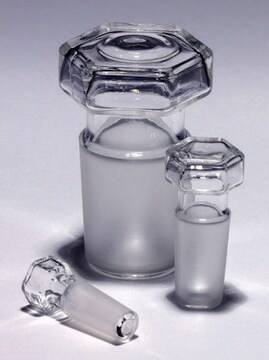Z707562
TPP® tissue culture flasks
Synonym(s):
T300 flask, cell culture flask, tissue culture flask
About This Item
Recommended Products
material
angled neck
polystyrene
screw top cap
sterility
sterile
sterile
feature
with cap (filtered)
packaging
case of 18 ea
case of 18
pack of 3
manufacturer/tradename
TPP 90301
capacity
410 mL
external L × W × H
270 mm × 170 mm × 45 mm
surface area
300 cm2 , growth surface (cm2)
working volume
30-40 mL
suitability
suitable for (cell culture; tissue culture)
binding type
Tissue Culture (TC)-treated surface
Looking for similar products? Visit Product Comparison Guide
Related Categories
General description
This excellent accessibility is due to the large neck opening and the favorable angle of inclination. The angled neck also reduces the chance of accidental spills and permits "dribble-free" pouring.
When the vented screw cap is tightened to the end position, the closed tissue culture flask is liquid and gas tight. By simply unscrewing the cap one quarter of a turn, the flask is in the "VENT" position, with the inside of the flask being aerated through a defined gap opening. This guarantees that the gas exchange with the environment and the possible risk of contamination are kept to a minimum. In addition, the special flat thread profile of the caps stops excess tightening and thus allows the caps to be re-used multiple times.
The TPP filter cap has a welded membrane in the cap cavity to offer free gas exchange without gas flow alteration. For optimal flask breathing, all membranes are proportionally dimensioned to each cap size. The microporous hydrophobic membrane (cytotoxic free) itself is constructed of 2 layers of membrane material based on a white acrylic copolymer over nylon support. With an airflow rate of 4.5 (LPM/3.7cm2/13.5psi), the gas exchange properties of the filtered flasks are comparable to that of the standard cap flasks.
Legal Information
Certificates of Analysis (COA)
Search for Certificates of Analysis (COA) by entering the products Lot/Batch Number. Lot and Batch Numbers can be found on a product’s label following the words ‘Lot’ or ‘Batch’.
Already Own This Product?
Find documentation for the products that you have recently purchased in the Document Library.
Our team of scientists has experience in all areas of research including Life Science, Material Science, Chemical Synthesis, Chromatography, Analytical and many others.
Contact Technical Service




